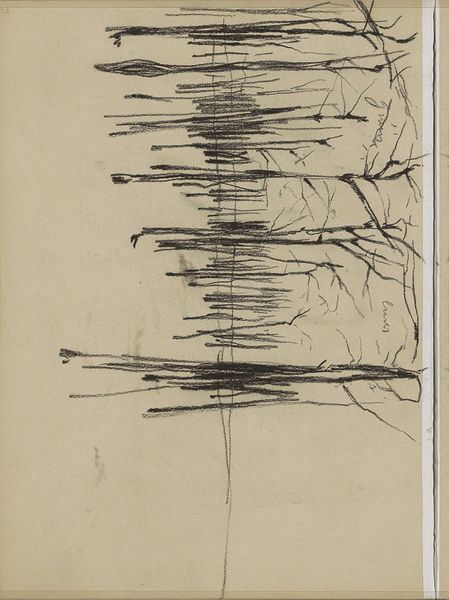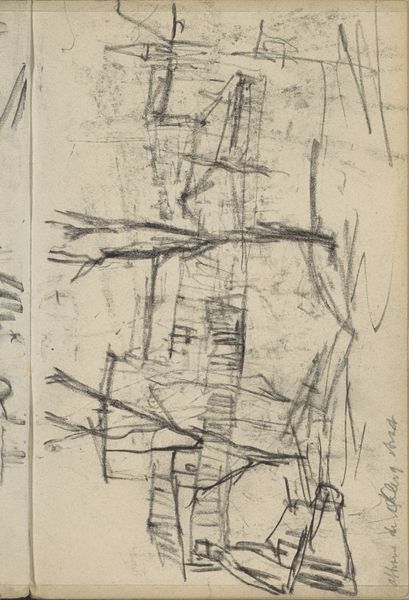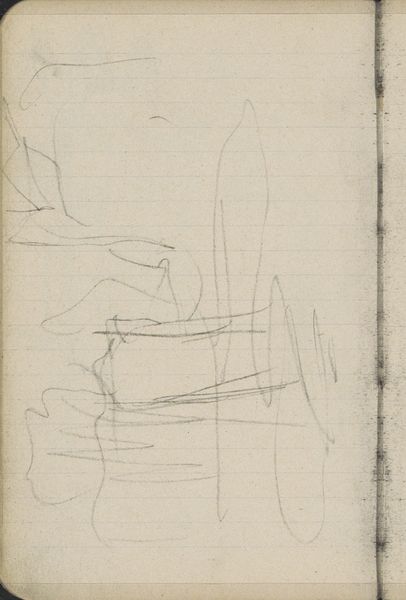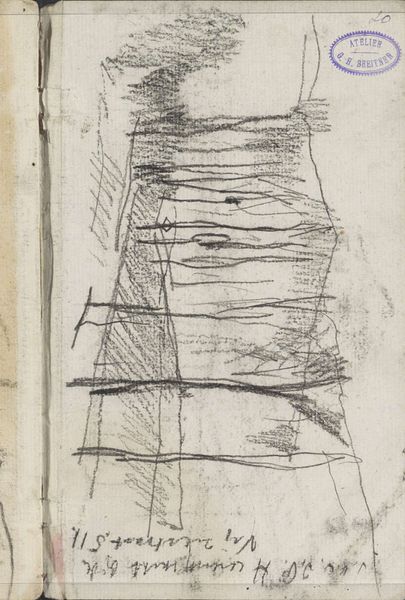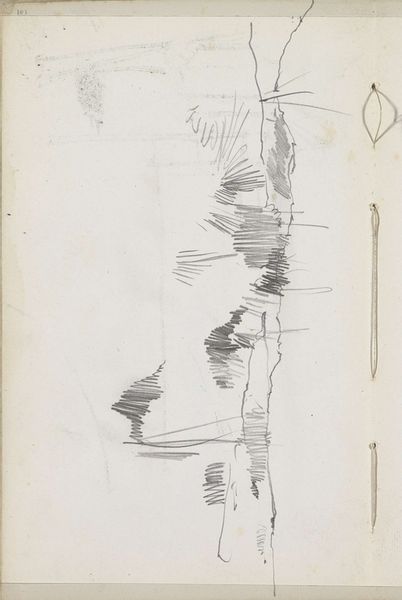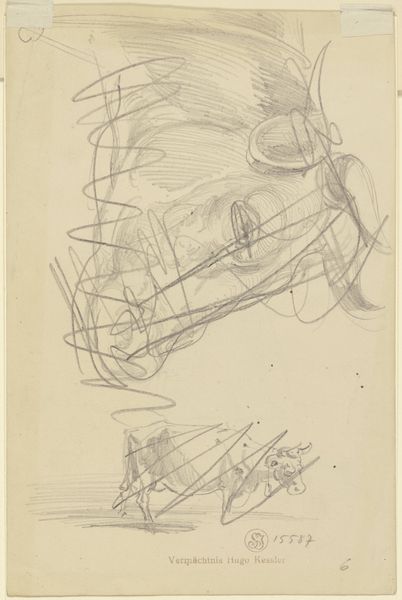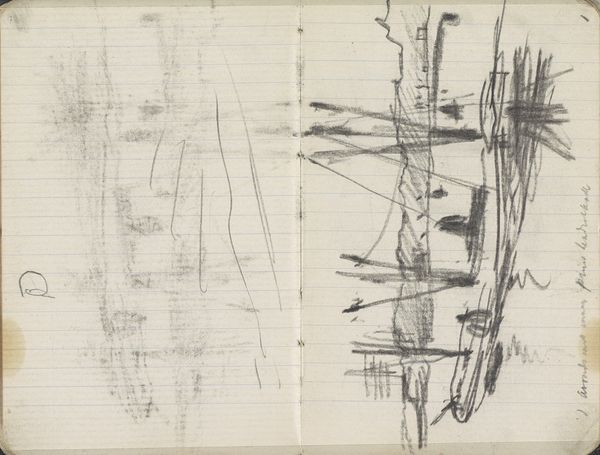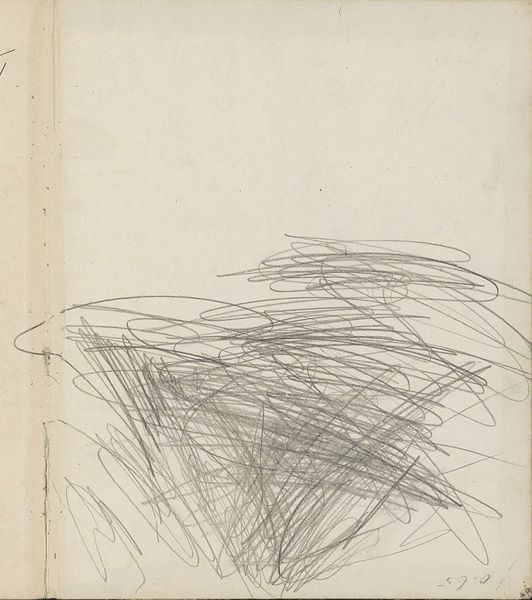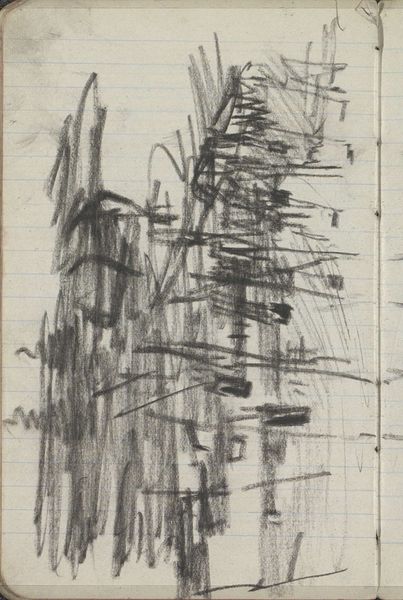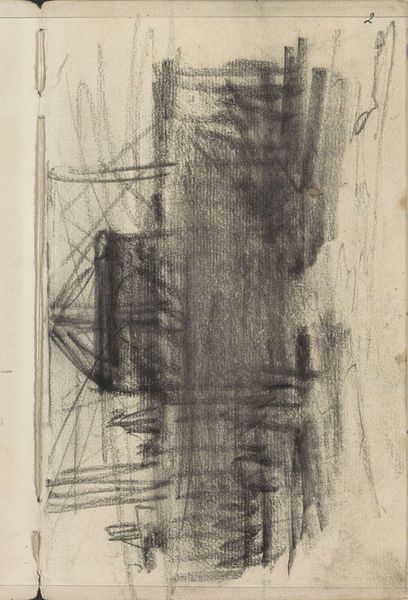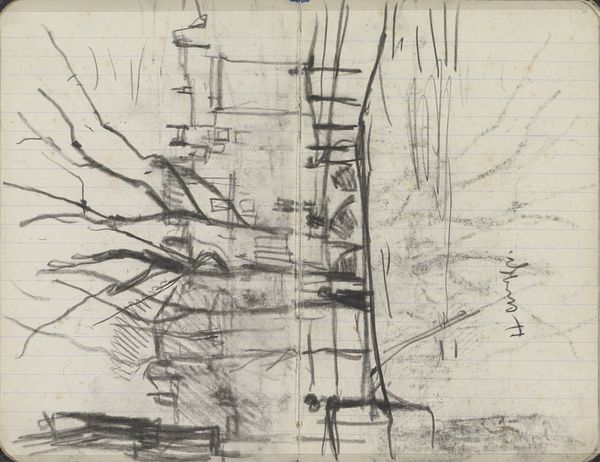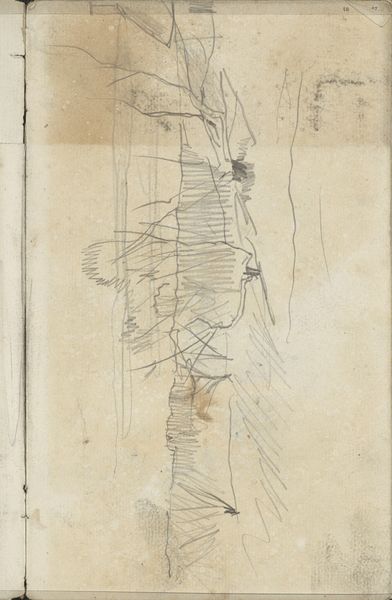
Copyright: Rijks Museum: Open Domain
Curator: Willem Witsen’s “Bosgezicht,” likely created sometime between 1874 and 1923, offers a glimpse into a personal meditation on nature. It’s a pencil drawing, currently held in the collection of the Rijksmuseum. Editor: My initial impression is one of stark simplicity. The composition feels almost abstract, like a deconstructed landscape. The use of pencil creates a somber, perhaps even unsettling, mood. Curator: Indeed. The composition certainly is spare. The density of horizontal lines in the center contrast strongly with the open space around it. This juxtaposition guides the viewer’s eye and underscores the artwork's structural organization. Editor: From a material perspective, I find the quick, repetitive strokes compelling. It is visibly rendered with what seems a well-worn graphite stick. This suggests immediacy and perhaps even a working-through of ideas directly on the page—a snapshot of the artistic process. You can feel the hand. Curator: Precisely. Witsen masterfully utilizes line quality, achieving tonal variations despite the monochromatic palette. The repeated horizontals are certainly about mass. However, the lighter strokes above contribute a feeling of atmosphere—dissolving forms into light. Editor: What's most engaging to me is how such a seemingly simple medium can evoke such a complex emotional response. The subtle smudging and erasures are integral; they speak to the physical interaction between the artist and the paper and allow the image to come alive. It makes me want to investigate Witsen’s studio practice more deeply. Curator: Yes, a fascinating detail. I would venture that through this emphasis on stark form, one recognizes the universal structure of a landscape instead of its particulars. It allows us to appreciate the essence of the natural world that is filtered through the artist's subjective vision. Editor: Thinking about the social context, the intimacy of the sketchbook format suggests a move away from public-facing grandeur and towards private reflection—a critical distinction that has shaped our understanding of "high art." Curator: It's a testament to the power of simplicity—a few lines on paper, transformed into an experience. Editor: Absolutely. It pushes us to rethink what qualifies as a "finished" work, highlighting instead the value of the artist's working processes.
Comments
No comments
Be the first to comment and join the conversation on the ultimate creative platform.
